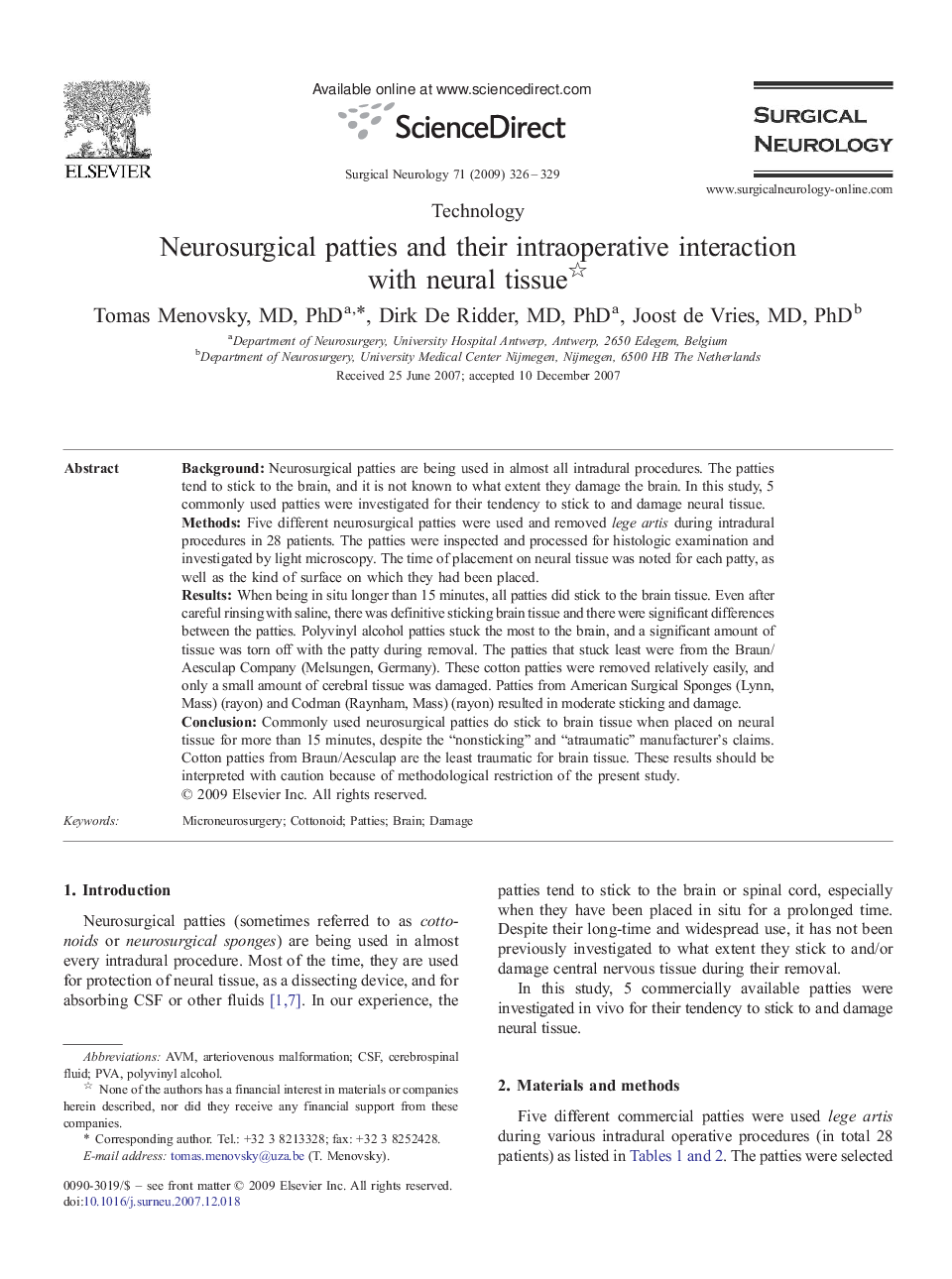| Article ID | Journal | Published Year | Pages | File Type |
|---|---|---|---|---|
| 3092516 | Surgical Neurology | 2009 | 4 Pages |
BackgroundNeurosurgical patties are being used in almost all intradural procedures. The patties tend to stick to the brain, and it is not known to what extent they damage the brain. In this study, 5 commonly used patties were investigated for their tendency to stick to and damage neural tissue.MethodsFive different neurosurgical patties were used and removed lege artis during intradural procedures in 28 patients. The patties were inspected and processed for histologic examination and investigated by light microscopy. The time of placement on neural tissue was noted for each patty, as well as the kind of surface on which they had been placed.ResultsWhen being in situ longer than 15 minutes, all patties did stick to the brain tissue. Even after careful rinsing with saline, there was definitive sticking brain tissue and there were significant differences between the patties. Polyvinyl alcohol patties stuck the most to the brain, and a significant amount of tissue was torn off with the patty during removal. The patties that stuck least were from the Braun/Aesculap Company (Melsungen, Germany). These cotton patties were removed relatively easily, and only a small amount of cerebral tissue was damaged. Patties from American Surgical Sponges (Lynn, Mass) (rayon) and Codman (Raynham, Mass) (rayon) resulted in moderate sticking and damage.ConclusionCommonly used neurosurgical patties do stick to brain tissue when placed on neural tissue for more than 15 minutes, despite the “nonsticking” and “atraumatic” manufacturer's claims. Cotton patties from Braun/Aesculap are the least traumatic for brain tissue. These results should be interpreted with caution because of methodological restriction of the present study.
